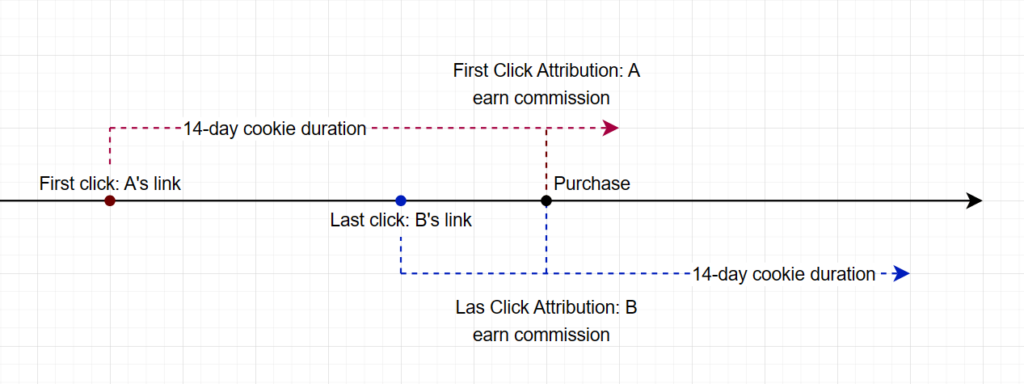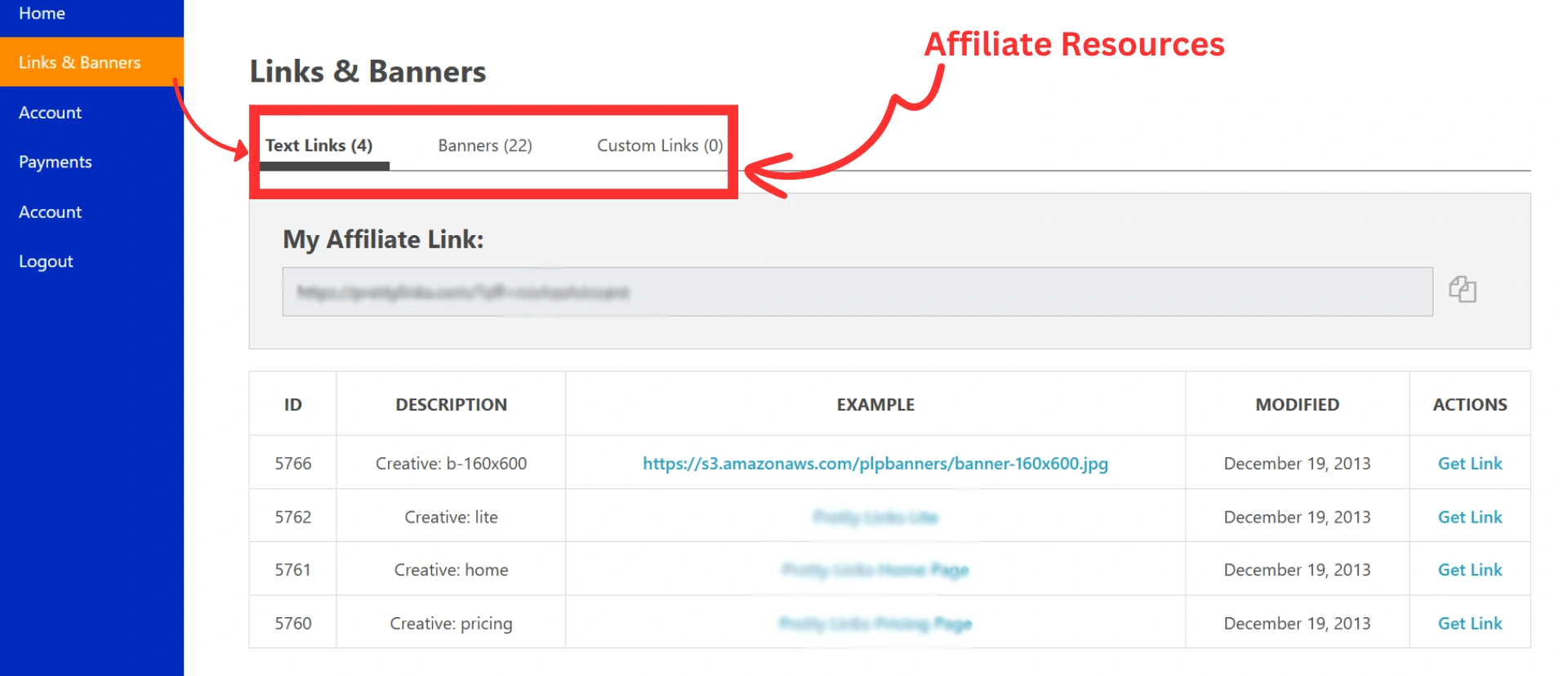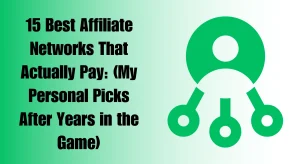How to Choose the Best Affiliate Programs for More Earnings and Long-Term Growth

Affiliate marketing can be a great way to earn online, but not all programs are worth your time. Some pay too little, have bad tracking systems, or make it hard to get commissions. Picking the right ones affects how much you earn and how easy it is to grow.
I’ve personally tested plenty of affiliate programs over the years. Some worked well, others wasted my effort. The key is knowing what to check—commission rates, cookie duration, payment terms, and company reputation. These small details matter.
In this guide, I’ll break down how to find high-paying, reliable affiliate programs that fit your niche. Whether you’re new or looking to earn more, this will help you avoid bad deals and focus on partnerships that actually pay off.
Key Takeaways
- The right affiliate programs can significantly boost your income potential.
- Understanding commission structures is essential for increasing profits.
- Research is key to finding the most lucrative and stable affiliate partnerships.
- Top-paying affiliate programs often provide robust marketing resources and support.
- Competitive niches with reputable brands can yield better results.
Understanding Affiliate Marketing
Affiliate marketing is a simple yet powerful way to earn by promoting products and earning commissions on sales. Instead of creating your own products, you partner with companies that already have them.
And to do this, you’ll have to join affiliate programs that connect you with brands willing to pay for referrals. But not all programs are the same—some offer great commissions, reliable tracking, and strong support, while others fall short.
Choosing the right ones can mean the difference between consistent earnings and wasted effort. It’s not just about finding high payouts; you need programs that align with your niche, have solid reputations, and provide real value to your audience. Understanding these factors will set you up for long-term growth.
How to Choose the Best Affiliate Programs
When choosing affiliate programs, there are a few key things to consider. Let’s break them down.
1. Define Your Niche and Audience
Picking a niche is one of the most important steps in affiliate marketing. Without a clear focus, it’s hard to attract the right audience or find programs that truly fit.
Just think about it this way: If you try to promote everything, you end up connecting with no one. A niche helps you target a specific group of people who actually care about what you’re offering. That means better engagement, more trust, and higher conversions.
Understanding your audience matters just as much. What are their interests, problems, and buying habits? If you’re in the fitness niche, are they beginners looking for simple workout plans, or advanced athletes searching for high-end gear?
Knowing this helps you choose affiliate programs with products they actually want.
For example:
- Fitness niche → Partner with supplement brands, workout gear, or online training programs.
- Tech niche → Promote software, web hosting, or gadgets.
- Finance niche → Recommend budgeting tools, investment platforms, or online courses.
The key is to match affiliate programs with what your audience already needs. That way, your recommendations feel natural, and people are more likely to trust—and buy—from you.
Read Also: How to Choose the Best Niche for Your Affiliate Marketing Business
2. Evaluate Commission Structure and Payment Terms
Not all affiliate programs pay the same way, and how you get paid can impact your earnings. That’s why it’s important to understand the different commission models before signing up.
Pay-Per-Sale (PPS)
Pay-Per-Sale is the most common model. You earn a commission when someone buys a product through your affiliate link. It’s straightforward—no sale, no commission.
The percentage varies by program, with some offering as little as 5% and others going up to 50% or more. High-ticket items (like software or luxury products) usually bring in bigger commissions, even with a lower percentage.
Pay-Per-Lead (PPL)
Some programs pay just for sending qualified leads, like when someone signs up for a free trial, fills out a form, or joins a newsletter.
These commissions tend to be smaller than PPS, but they add up quickly since users don’t have to spend money for you to earn. Great for niches where people hesitate to buy right away, like finance or insurance.
Recurring Commissions
This is where the real long-term earnings come in. If you promote subscription-based services (like SaaS tools, memberships, or courses), you can earn a commission every month as long as the customer stays subscribed. Instead of getting paid once, you build a steady income stream.
Payout Frequency and Methods Matter
Before signing up for any program, check when and how you’ll get paid. Some programs pay weekly, others monthly. Some have a minimum payout threshold, meaning you won’t see your earnings until you reach a set amount.
Payment methods vary too. Many programs use PayPal because it’s fast and convenient. Others prefer direct bank transfers, which can take longer but work better for large payouts. Some even offer cryptocurrency payments.
Always check the details, so you’re not stuck waiting for money or dealing with high transaction fees.
A solid affiliate strategy includes a mix of these models. High-paying PPS programs bring in big wins, PPL programs offer fast, steady payouts, and recurring commissions create ongoing income. Balancing them keeps cash flow consistent.
Read Also: Understanding the Affiliate Commission Structure: What It Is and How It Works
3. Check Program Reputation and Reliability
Not all affiliate programs are worth your time. Some pay late, track clicks poorly, or—worse—vanish without paying at all. That’s why checking a program’s reputation before joining is a must.
How to Research Credibility
Start with a quick search. Look for reviews from actual affiliates, not just the program’s sales page. Forums like Reddit, Trustpilot, or affiliate marketing communities are the best for real experiences. Pay attention to:
- Payment reliability – Do they pay on time?
- Tracking accuracy – Are clicks and sales properly recorded?
- Customer support – Do they respond when there’s an issue?
A good program will have mostly positive feedback, but no program is perfect. A few complaints are normal—consistent issues are not.
Red Flags to Watch Out For
Scammy programs often promise sky-high commissions but fail to deliver. Watch for:
- No clear payment terms – If they’re vague about payouts, be cautious.
- Poor tracking – If affiliates report missing clicks or sales, that’s a problem.
- High minimum payout thresholds – If you need to earn an unrealistic amount before getting paid, they may not want to pay at all.
- Bad reviews or no online presence – If no one’s talking about them, that’s a red flag.
Stick with Trusted Networks
If you want peace of mind, joining established affiliate networks is the safest bet. Platforms like Amazon Associates, ShareASale, CJ Affiliate, and Rakuten vet programs before listing them. They handle tracking, payments, and disputes, so you don’t have to chase down brands for your money.
A strong affiliate program doesn’t just pay well—it pays consistently and treats affiliates fairly. Doing a little research upfront saves you from wasted effort and unpaid commissions later.
Read Also: 15 Best Affiliate Networks That Actually Pay: (My Personal Picks After Years in the Game)
4. Assess Product Quality and Brand Reputation
Promoting bad products can ruin your credibility fast. People trust your recommendations, and if what you promote turns out to be junk, they won’t stick around. That’s why product quality and brand reputation matter.
Why Quality Matters for Long-Term Earnings
Affiliate marketing isn’t about quick wins. Selling low-quality products might get you a few commissions at first, but when buyers realize they’ve wasted their money, they won’t trust you again.
Good products, on the other hand, lead to happy customers, repeat sales, and better conversions in the long run.
How to Research Products Before Promoting Them
You don’t have to buy everything you promote, but you should at least do your homework. Here’s how:
- Check real customer reviews – Look beyond the company’s website. Amazon, Trustpilot, and forums give real, unfiltered opinions.
- Watch video reviews – YouTube creators often test products and give honest feedback.
- Read expert comparisons – Tech blogs, finance sites, and niche-specific reviewers often compare similar products side by side.
- Test it if possible – If you can try the product yourself, even better. Personal experience gives you stronger insights and builds trust with your audience.
How Brand Reputation Affects Conversions
Well-known brands convert better because people already trust them. If a company has a strong reputation, buyers need less convincing. On the flip side, promoting a shady brand means more resistance—people hesitate, search for alternatives, or skip the purchase altogether.
Signs of a trusted brand:
- Strong online presence and positive media coverage
- Good customer support and refund policies
- Consistently high product ratings
Signs of a risky brand:
- Lots of complaints about customer service or refunds
- Fake-looking reviews or aggressive marketing tactics
- No real company information or history
Affiliate marketing isn’t just about making money—it’s about building trust. Promoting high-quality products from reputable brands makes your job easier and keeps your audience coming back for more.
Read Also: How to Choose the Right Products to Promote as an Affiliate
5. Analyze Conversion Rates and Earnings Potential
A high commission means nothing if the program doesn’t convert. That’s why you need to check conversion rates and earning potential before promoting any affiliate program.

Let’s break down the key factors.
How to Check Historical Conversion Rates
Before joining a program, look at past data. Many networks, like ShareASale and CJ Affiliate, show conversion rates for each merchant. This tells you how often clicks turn into sales.
If a program has a high conversion rate, it means people trust the brand and are ready to buy. A low conversion rate could mean issues with pricing, the checkout process, or the product itself.
Some ways to check a program’s conversion strength:
- Affiliate Networks: Look at conversion rate reports in platforms like Rakuten or Impact.
- Affiliate Reviews: Other affiliates often share real conversion data in forums or blog posts.
- Merchant Websites: A well-designed site with a strong offer usually converts better.
If a program doesn’t share conversion rates, dig deeper. Ask the affiliate manager or test it yourself before putting in too much effort.
Why EPC (Earnings Per Click) Matters
Earnings Per Click (EPC) is one of the most useful metrics in affiliate marketing. It tells you how much, on average, affiliates earn for every click sent to the merchant’s site.
For example:
- Program A: $3 EPC – This means affiliates earn an average of $3 per click.
- Program B: $0.10 EPC – A low EPC suggests poor conversion rates or low commissions.
A higher EPC usually means better earnings with less effort. It shows the program has strong demand, a trusted brand, and effective sales pages. Always compare EPC between programs to see which gives you the best return.
Real Examples of High vs. Low-Converting Programs
Let’s say you’re in the tech niche and want to promote software. Here’s how different programs might perform:
- Example 1: A High-Converting Program
A popular SaaS tool offers 30% recurring commissions and a proven track record of conversions. The brand is well-known, and the product solves a clear pain point. Affiliates report high EPCs and solid earnings. - Example 2: A Low-Converting Program
A random e-commerce store offers 5% commission with no established reputation. The checkout process is clunky, and there’s no clear incentive for customers to buy. Affiliates struggle to earn because conversions are low.
The lesson? A program’s conversion rate and EPC tell you how profitable it is. Always check these before investing time into promoting. A high-commission program means nothing if no one is buying.
6. Consider Cookie Duration
Cookie duration plays a big role in how much you earn from affiliate programs. If a user clicks your link but doesn’t buy right away, the cookie tracks their visit. If they return and buy within the cookie period, you still get the commission.
How Cookie Tracking Works
When someone clicks your affiliate link, the merchant’s site places a small file (cookie) on their browser. This file records the referral, so even if they don’t buy immediately, the sale still gets credited to you if they return and purchase before the cookie expires.

For example:
- A 24-hour cookie: The buyer must complete the purchase within a day. If they come back after 25 hours, you get nothing.
- A 30-day cookie: The user has a month to buy, giving you a better chance of earning.
The longer the cookie duration, the higher your chances of getting credited for a sale.
Why Longer Cookie Durations Matter
Most people don’t buy instantly. They compare options, read reviews, or wait for discounts. If a cookie lasts only 24 hours, you lose commissions when buyers take longer to decide.
A longer cookie window gives you more room to earn, especially for high-ticket or subscription-based products. SaaS programs, for example, often have 30–90-day cookies because buyers need time to evaluate the product.
For instance, this is a cookie duration notice for one of the SaaS affiliate programs I’ve joined:

Examples of Long vs. Short Cookie Durations
- Amazon Associates (24 hours): If the customer doesn’t buy within a day, you miss out. The only exception is if they add the product to their cart, which extends the cookie to 90 days.
- ShareASale or CJ programs (30–90 days): Many merchants offer extended cookies, giving affiliates a better chance of earning.
- ClickFunnels (Sticky Cookie + Lifetime Commission): Once a user signs up, you get commissions on all future purchases, even years later.
Short cookie durations work best for impulse buys, while longer ones benefit high-ticket or research-heavy purchases. Always check cookie policies before joining an affiliate program—choosing one with a longer window could mean more commissions with less effort.
7. Look for Marketing Support and Resources
A good affiliate program doesn’t just pay commissions—it helps you sell. The best programs provide marketing materials, training, and ongoing support to make your job easier.

Why Marketing Materials Matter
When an affiliate program provides banners, email templates, and pre-written content, it saves time and effort. You don’t have to start from scratch, which means you can focus on driving traffic and conversions.
Common marketing materials include:
- Banners – Ready-to-use ads for blogs, sidebars, or social media.
- Email templates – Pre-written emails for promotions and follow-ups.
- Product images – High-quality visuals to use in content or ads.
- Social media posts – Pre-made captions and images designed for engagement.
Having these resources makes promoting a product easier and ensures messaging stays consistent.
Affiliate Training and Support Availability
Some programs go beyond materials and offer training. This can include:
- Webinars on how to market the product.
- Guides on SEO, paid ads, or email marketing.
- Dedicated affiliate managers to answer questions and provide strategy tips.
For beginners, training can be a game-changer. Even experienced marketers benefit from insights on what works best for that specific program.
Case Studies of Programs with Strong Affiliate Resources
- SEMRush Affiliate Program: Offers a knowledge base, training webinars, and in-depth marketing materials.
- GetResponse Affiliate Program: Provides email templates, banners, and a dedicated support team.
- Shopify Affiliate Program: Offers free courses on eCommerce, marketing tips, and an affiliate manager for top performers.
Choosing an affiliate program with strong resources gives you an edge. It means less guesswork, faster results, and higher earnings over time.
8. Compare Competition and Market Demand
Picking the right affiliate product isn’t just about commission rates. If nobody wants the product or competition is too high, you won’t make much. You need to find the sweet spot—products with demand but not too much saturation.
How to Analyze Market Demand
Before promoting anything, check if people actually want it. A few ways to do this:
- Search Volume: If people aren’t searching for it, selling it will be tough.
- Trends: Some products do well for a season, while others stay in demand all year.
- Buyer Intent: Are people just looking for info, or are they ready to buy?
Let’s say you’re considering a new fitness supplement. If searches for it are low and most results are from general health blogs, it may not be worth your time. But if people are actively searching “buy
” and reviews dominate page one, that’s a good sign.Using Tools for Demand Research
There’s no need to guess—data tells you what works. Here’s how:
- Google Trends – See if interest is growing or fading over time.
- Ahrefs or SEMrush – Check keyword search volume, competition, and ranking difficulty.
- Amazon & eCommerce sites – Look at product reviews, ratings, and sales rankings.
For example, a trending gadget might spike on Google Trends but have little long-term demand. A high-ticket course might have fewer searches but strong purchase intent. These tools help you separate hype from real opportunity.
Balancing High-Paying vs. Competitive Programs
A program with high commissions sounds great, but if thousands of affiliates are pushing it, standing out gets hard. On the other hand, low-competition niches often pay less. The goal is to find balance:
- High-Competition, High-Payout: Think SaaS tools or finance programs. Tough to rank but big commissions.
- Low-Competition, Low-Payout: Niche hobbies or unique products. Easier to rank but smaller returns.
- Mid-Level Opportunity: Products with steady demand and moderate competition. These are the sweet spot.
For example, promoting web hosting (high commissions, high competition) requires strong SEO or paid ads. A niche skincare brand (moderate commissions, lower competition) might be easier to rank for and still convert well.
The key is to find products with proven demand but not so much competition that you’re drowning in a sea of affiliates. Data-driven research will keep you from wasting time on the wrong offers.
Conclusion
Affiliate marketing isn’t just about signing up for any program with high commissions. The right choices set you up for consistent earnings and steady growth. A strong program aligns with your niche, offers fair commissions, and provides real value to your audience.
Quality matters. Promoting trusted brands and high-quality products builds credibility. If people trust your recommendations, they’ll keep coming back—and that means more conversions over time. Programs with solid reputations, reliable tracking, and good support make your job easier and your earnings more stable.
Data is your best friend. Looking at conversion rates, EPC, and cookie durations helps you avoid programs that sound good on paper but don’t pay well in reality. Tools like Google Trends and SEMrush reveal demand so you’re not wasting time on products nobody wants.
Think long-term. Quick wins are nice, but the real money comes from recurring commissions, high-retention programs, and brands that help you succeed. The best programs provide marketing materials, training, and support, so you’re not doing everything alone.
At the end of the day, smart affiliate marketers don’t chase every opportunity. They pick programs strategically, focus on what converts, and build a business that keeps growing.
Frequently Asked Questions
How do I know if an affiliate program is trustworthy?
Check reviews, forums, and testimonials from other affiliates. Reliable programs have a history of timely payments, good tracking, and strong support. Affiliate networks like ShareASale and CJ Affiliate also vet programs for legitimacy.
Should I choose programs with the highest commissions?
Not always. High commissions don’t mean much if the product doesn’t sell. Look at conversion rates, EPC (Earnings Per Click), and refund policies. A program with lower commissions but strong demand can be more profitable in the long run.
What’s the best cookie duration for affiliate programs?
Longer is better. A 30–90-day cookie gives you a higher chance of earning a commission. Some programs, like Amazon Associates, only offer 24-hour cookies, which means you need fast conversions.
How many affiliate programs should I join?
Start with a few that match your niche and audience. Too many programs can spread your efforts thin. Focus on those with high-quality products, good support, and reliable payouts before expanding.
What are the best tools for researching affiliate programs?
Google Trends, Ahrefs, and SEMrush help analyze demand and competition. Affiliate networks like Rakuten and Impact show conversion rates, EPC, and payout structures so you can compare options before committing.






